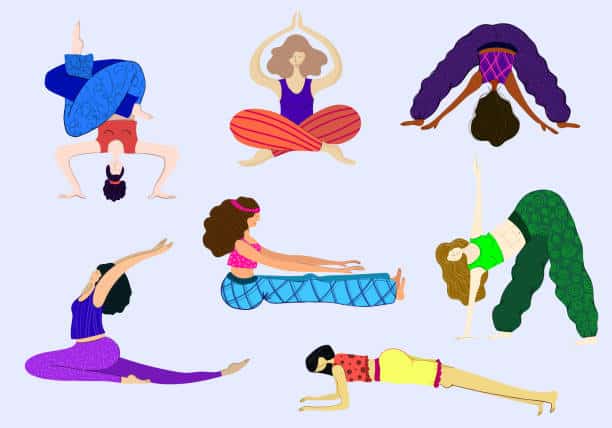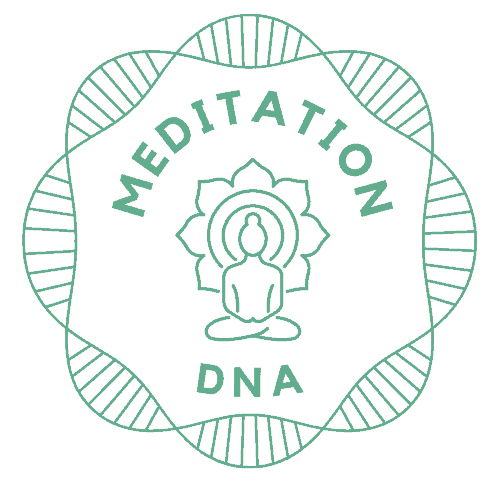
It’s a known fact that meditation enhances our focus and directs our attention to the present moment – is dance therapy movement meditation different? Can it improve our learning and concentration and have effects on our creativity too?
This only makes sense as creating art or using our hands to create something (think sculpting, pottery, painting, drawing, etc.) is a mindfulness activity in itself.
The same goes for movement or dance – moving our body while listening to music is a very effective way to bring us into the present moment. Out of our heads and into our bodies – similar to a yoga practice.
Art and dance therapy (as well as music) is commonly practiced as a form of well… you guessed it… therapy. Art, music, and dance therapy (or movement therapy) are all very effective in dealing and coping with feelings, releasing emotions, and moving through trauma through the act of self-expression.
what is mindful meditation and how does it work – What is Movement meditation?
Movement meditation is different from traditional meditation because it focuses on the body and its movements – therefore further strengthening the mind-body connection.
It is still a great way to relax and de-stress and an excellent way to practice mindfulness.
It is done in a slow and controlled manner as you draw your awareness to each part involved in the movement – the muscles, the dynamics and how your joints bend, the feeling on your skin, your breathing, your heartbeat, and all other inner sensations that you might have never noticed.
You pay attention to how the body feels as it moves, bends, and twists and how these physical sensations might bring up certain emotions.
You are therefore involving all the senses.
Have you ever sat on a beach in a blissful state and picked up handfuls of sand that mesmerized you as you watched them run through your fingers. You probably felt individual grains as the sand left your hands. You may have noticed the way your fingers felt as they opened to let the sand go through. Other things such as the way you were sitting and breathing likely entered your mind. You were focused and centered, yet you were still moving. This is what movement meditation is all about.
It is important to know that the focus is less on the goal of the movement or how it is ‘supposed to look’ but more on the process of the movement and how the body reacts from one movement to the next. It should therefore be approached with curiosity and exploration.
Just as any other form of meditation there is no right or wrong way to do a movement meditation. Simply walking and noticing each placement of your foot on a path can be a meditative movement.
The first step is noticing… if you are aware of what you are doing in the present moment then you’re on the right track (pun intended)!
how to calm your mind through a meditation using movement
Many people struggle to sit still which is why they might find meditating in a more traditional sense (seated meditation) difficult as they find themselves overthinking or getting easily distracted with their thoughts.
Movement meditation is a great alternative as your mind zones in on how your body moves in the space and in relation to the objects around you. It is therefore an embodied meditation experience which means we are experiencing the meditative state both on a physical and mental level.
Using our body while meditating can help us bring attention our of our busy minds and channel the energy in a physical and practical sense. Again, it is important to find what works for you.
how to do movement meditation – Movement meditation in practice
So what would this feel or look like?
Here is a short guided movement meditation starting from a seated position and transitioning into movement you can try:
Some things to keep in mind before starting:
* It is important to focus on the movement of the body as opposed to the goal of the movement itself. Notice where you are currently rather than worrying about what you are going to do next. Allow your intuition to guide you.
* Movements should be slow and deliberate.
*. Focus on the breath as you move.
*. Be aware of the sensations of your body as you move.
Mindful movement meditation for anxiety
To begin your mindful movement morning meditation gratitude practice:
1. Take a few moments to sit in a comfortable position and align your breath and body. Try to make your movements and breath one, like swaying your body in time with a swaying tree.
2. Put your hands on your body and feel the movement of breath as you breathe in and out. Notice as your arms extend and return slightly.
3. Start to stand up and notice what occurs. You will likely feel your hands touch the ground, your legs begin to extend, your spine lengthens, and your neck strengthens as you stand up.
4. Once standing, notice the feelings in your body and pay special attention to any uncomfortable feelings. Adjust your body to make those uncomfortable feelings go away, or if you can’t, then just take notice of them and move on to somewhere else.
5. Start at the top of your head and notice sensations or feelings that come into mind. Once you have felt the sensations of the top of the head, move on to the forehead, then the cheeks, nose, ears, lips, chin, and neck. Keep moving through your body, and registering any feelings that you have, until you reach the tip of your toes. This process does not have to take a long time or a short time. It is important to move at your own pace and not judge how fast or slow you are going.
6. Bring your whole body back into focus, instead of just one area, and begin to move with your heartbeat. Feel your body as it moves back and forth or side to side.
7. Raise an arm into the air and pretend as if you are picking a fruit off a tree that is just out of reach. Notice as your arm lengthens and reaches for the fruit. Notice how you toe raises off the ground in order to allow more height for your arm. Notice all the movements of your body during the simple act of reaching for a fruit takes place.
8. Repeat with the other arm.
9. Leave your standing spot and move around the area you are in. Notice the sensations that appear as you begin to take steps. Your feet, your legs, your hips, your stomach all work together to create movement. Take the time to notice the individual sensations in those areas.
10. Now, sit back on the floor and pay attention to your body as it crunches and bends. End as you began, and align your breath with your body.
This is just one variation of movement meditation. You may want to touch things as you stand and notice the sensations that occur. You may want to dance slowly and rhythmically and notice the feelings of your body that you would otherwise ignore. The point is to be mindful of your body and the sensations that occur.
Source: https://aihcp.net/2012/10/17/what-is-movement-meditation/
mindful movement guided meditation youtube
What are the benefits of movement meditation?
- Becoming more in tune with your body – this could relate to noticing pain or discomfort easier which sometimes gets ignored. You also start to listen to your body’s cues on what it likes and does not like which allows you to be more sensitive and compassionate in the way you treat it so that you can reach your optimal health.
- Becoming more sensitive to your surroundings and allows you to form stronger connections with your environment and other people.
- Increased proprioception – you will become more aware of how your body takes up space (in an energetic sense) and how it relates to other people or objects around you.
Being aware of the sensations that occur during movements is a key component of movement meditation. It is possible to practice this kind of meditation in moments like walking, dancing, cooking, and even going to bed.
So some might confuse movement meditation to dance therapy… although they work on the same basis there are slight differences in the way they are practiced.
How is this different, you might ask.
The power of Dance Therapy movement
movement meditation dance – what is dance therapy?
Dance Therapy is a form of psychotherapy that includes movement, music, and creative expression. The goal of dance therapy is to help patients learn new ways to express themselves, find meaning in life, and cope with stress.
It is therefore a self-expression tool as well as an art form. Based on this – a professional dancer basically practices mindfulness every day as part of their profession.
dance therapy vs movement meditation
Movement meditation is used within dance therapy. Movement meditation however can be done with the simplest everyday movement – making a cup of tea and being mindful and fully present can be seen as movement meditation while dance therapy has an element of physical and emotional expression linked to the movement. So dance is movement but movement is not necessarily dance.
Why is dance therapy used?
Dance therapy is used to help children, as well as adults, learn how to express themselves through movement. Children who do not know how to move often feel lonely and isolated.
Through dance therapy, they learn to be less afraid of expressing their emotions, and they learn to connect with others.
Self-expression is very important in order to learn how to regulate and deal with different emotions and release pent-up emotional tension or stress.
It can also refer to many different activities within the field of humanistic psychology to deal with various emotional disturbances and personality disorders. This includes dance, drama/theater, gymnastics, improvisational theater, kinesiology, physical education classes, rhythmic exercise programs, self-discovery exercises, therapeutic recreation, yoga, etc.
what are the benefits of dance movement therapy?
Anybody who has practiced some form of dancing whether that be shaking it out to your favorite song in the living room, technical training, or in a social/club environment knows how powerful it is in shifting our moods and releasing many positive neurotransmitters. It channels our mental tension into physical energy that we quite literally then shake off.
Due to it being an embodiment practice, the beneficial effects of Dance Therapy helps patients mentally as well as physically in the following ways:
- more active,
- increase the range of motion of the joints,
- improve balance and coordination,
- increase muscle strength and flexibility,
- reduce pain,
- improved motor function
- release stress, anxiety, worries, or pent up emotions
- deal with PTSD or other emotional trauma
- Positive effects on cognitive function
- beneficial effects on creativity and innovative thinking
- learn to let go, express, and release emotions
- helping patients feel happier and more confident.
Some people might even wonder “can mindfulness help with weight loss?”
Well, when done like this it adds movement to our lives which boosts our Physical activity energy expenditure (PAEE) and Total Daily Energy Expenditure (TDEE) and this could ultimately lead to weight loss if you are used to leading a sedentary life. This can lead to a change in lifestyle or daily living which results in an improved quality of life.
Dance therapy for Parkinson’s
In a pilot study with individuals with serious mental illness who participated in salsa dance, participants reported improved mood, enjoyment of classes, and the desire to continue to dance. (dovepress.com)
There have been numerous studies also conducted on Parkinson’s disease dance therapy and how it has greatly improved the cognitive functions of the patients. Similar effects have been shown when looking at dance therapy for dementia.
Becoming a dance therapist – schools for dance therapy
Although dance therapy is not as common as conventional therapeutic practices there are many dance therapists or movement therapists that have pursued dance therapy careers who help people by utilizing the powerful tool of dance psychology.
Working as a dance therapist generally requires an undergraduate degree, in addition to a master’s degree or post-graduate program approved by the American Dance Therapy Association (ADTA).
colleges with dance therapy degrees
- Drexel University
- University of Wisconsin-Madison
- Pratt Institute-Main
- Columbia College Chicago
- Sarah Lawrence College
When it comes to movement therapy there are many forms and techniques that can be utilized and an important aspect is to honor the way everybody has a unique way to embody movement. Improvisation techniques are therefore widely used as part of movement meditation or movement therapy.
One technique that has to be mentioned is the GAGA dance movement which has become very popular as a movement exploration technique among the professional dance and performing arts industry.
Dance for people – What is the gaga dance technique?
The GAGA Dance Technique is a movement language created by Israeli choreographer, Ohad Naharin. This technique uses the body’s natural movements to express emotions through dance.
This dance style and technique has become very popular all over the world – specifically in Israel and across Europe – amongst professional dancers but non-dancers too.
Many people attend GAGA classes as a form of self-expression and energy/emotional release. ie. a form of therapy or meditation.
It is a dance class in a less traditional sense as it has to be done in a studio with the mirrors covered, there are no specific movements that you can or can’t do. The teacher has cues that guide the flow of the class and each student interprets these cues in their own way.
The aim of it is to be entirely present and in the moment. As you move there is no room or space for self-judgment (which is why the mirrors are covered). It is not about what you look like but what the movement brings out in you. It is all about the feeling and shaking those feelings to the surface.
In conclusion, dance/movement therapy has various techniques that aid in emotional healing and trauma release. Dance Psychology is a relatively new field of study but the positive changes movement has on our minds and bodies date back centuries.
This along with movement meditation is a form of mindfulness that has a wide impact on our mental health. It is a form of embodied self-expression that strengthens the mind-body connection and can transform the way we show up in our daily life.



